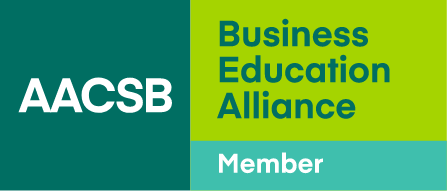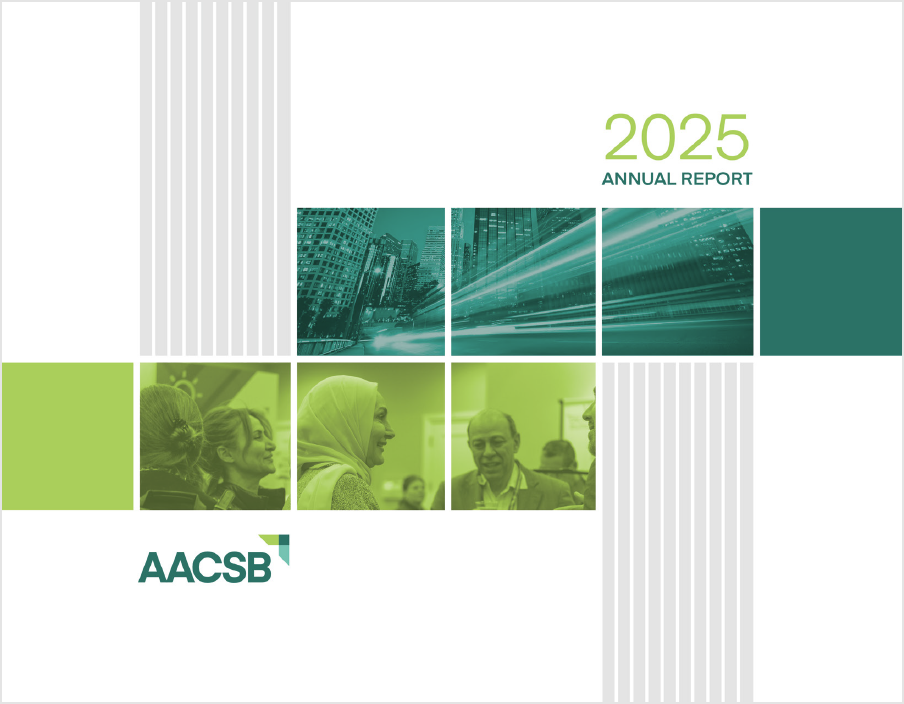Faculty Qualifications
FAQs - Faculty Qualifications
Do tutors, teaching assistants, or other faculty supporting a lead professor need to be included in our faculty tables?
Normally, the determining factor for who is included in Table 3-1 is: Which individuals have primary engagement with the learner, regardless of the modality and method of delivery of the course. The instructional faculty members who have primary engagement with the learner, either directly or indirectly, must be reported in Table 3-1, regardless of whether they are full-time, adjuncts, or faculty contracted through a third party. Examples of indirect engagement with students include engagement through the use of teaching assistants/tutors or through enhanced artificial intelligence. Teaching assistants or tutors who support an instructor of record by assisting in grading, test proctoring, tutoring, and conducting labs for students would not be included on Table 3-1.
However, if the student-faculty interaction is primarily with the facilitator/tutor and the facilitator/tutor is responsible for other teaching activities, then the school would be expected to include these facilitators/tutors. While each situation is unique, and each case will be looked at individually, we encourage schools to research comparable schools that may have implemented a similar faculty model.
However, if the student-faculty interaction is primarily with the facilitator/tutor and the facilitator/tutor is responsible for other teaching activities, then the school would be expected to include these facilitators/tutors. While each situation is unique, and each case will be looked at individually, we encourage schools to research comparable schools that may have implemented a similar faculty model.
In Table 3-1, how do we represent a faculty member that teaches in more than one discipline?
If a faculty member is involved through teaching or research in two disciplines, they should be listed in each discipline and footnoted. However, the percentage of time devoted to mission should not exceed 100%. The percentages should reflect the faculty member's allocation of time devoted to mission in each discipline e.g. 50/50.
In Table 3-2, does a school need to represent the deployment of faculty by degree level or each program within a degree level?
For Table 3-2, bachelor’s degrees can be aggregated to the degree level. However, we suggest “breaking out” master’s degrees programs in order to show how faculty are deployed across both research and professionally oriented master’s programs since there are inherent differences between these programs and the faculty required to teach in them. MBA programs may be combined into one line; however, where significant differences exist among types of MBA programs or target audiences, it is preferable to show these varying MBA programs broken out on separate lines.
What should our school's faculty teaching load be?
AACSB standards do not specify faculty teaching loads. A peer review team and committee will often use the school’s peer school list to benchmark whether the school’s teaching expectations are reasonable. For example, if the peer schools expect a 3-3 teaching load and the school being reviewed has a 5-4, this may be deemed to be too high. Also, during a peer review team visit, the team will visit with the faculty and will ask questions to try and get a sense of whether they have the time to devote to their responsibilities such as research and advising.
Should we include non-business faculty that teach in cross-disciplinary programs in our documentation and on our tables?
Generally speaking, with cross-disciplinary programs, schools are not expected to document the qualifications of faculty teaching outside of the business discipline. If it were to be determined that the content of their courses is related to traditional business subjects, then the school may be asked to include these faculty in their reporting.
What are the particular criteria (contract types and length, part-time vs. full-time, etc.) for faculty members to be considered participating?
Standard 3 states: Normally, the school considers participating faculty members to ongoing members of the faculty, regardless of whether their appointments are full-time or part-time, whether their positions with the school are considered their principal employment, and whether the school has tenure policies.
A supporting faculty member does not normally participate in the intellectual or operational life of the school beyond the direct performance of teaching responsibilities. Usually, a supporting faculty member does not have deliberative or involvement rights on faculty issues, membership on faculty committees, or assigned responsibilities beyond direct teaching functions (e.g., classroom and office hours). Classification as a supporting faculty member does not rely on the person’s contractual status with the institution.
Schools are expected to develop criteria for documenting faculty members as "participating" or "supporting". Criteria should be consistent with each schools’ mission, expected outcomes, and strategies.
A supporting faculty member does not normally participate in the intellectual or operational life of the school beyond the direct performance of teaching responsibilities. Usually, a supporting faculty member does not have deliberative or involvement rights on faculty issues, membership on faculty committees, or assigned responsibilities beyond direct teaching functions (e.g., classroom and office hours). Classification as a supporting faculty member does not rely on the person’s contractual status with the institution.
Schools are expected to develop criteria for documenting faculty members as "participating" or "supporting". Criteria should be consistent with each schools’ mission, expected outcomes, and strategies.
Doctoral students who have obtained all but dissertation (ABD) status are considered SA for three years. How is ABD defined?
The school can define ABD in a manner that makes sense for the particular type of program, duration, etc. in question. Normally individuals are classified as ABD after passing their comprehensive or qualifying exams.
Are research assistants (doctoral students with a master's degree working on a dissertation) included in the AACSB tables?
The faculty member of record should be included on the tables. Unless the research assistant has substantial teaching responsibilities for a specific course, this assistant is not included on the table.
How should a faculty member who meets more than one faculty definition be classified? Can this person be listed for 100 percent in more than one category?
The school applies its own definitions for faculty and ensures that the definitions are aligned with the mission statement. A person meeting the school’s definition for more than one category should be designated under one classification per discipline.
Can faculty members holding LLM degrees be considered SA (scholarly academics)?
According to Standard 3, an LLM degree is considered a terminal degree in business for those faculty members teaching taxation and for those teaching courses or modules related to law or aspects related to the legal environment of business (e.g. ethics, sustainability, etc.). If a faculty member with an LLM is engaged in ongoing, sustained, and substantive academic activities such as scholarly research and other scholarly activities, they may be classified as SA in Taxation and Law. If they remain current through sustained activities related to practicing law or other related activities, they may be classified as PA.
What is "percent of time devoted to mission?"
"Percent of time devoted to mission” is intended to broadly represent and encompass all professional responsibilities of each faculty member, including teaching, research, and other professional responsibilities that may be assigned. The faculty qualifications portion of Table 3-1 should not be developed using a metric that only captures teaching. For full-time faculty members including those holding administrative roles within the business school/accounting program, the “percent of time devoted to mission” is 100 percent. For part-time faculty members, something less than 100 percent, and the calculation used to determine the percentage, should be specified.
How do you calculate "percent of time devoted to mission" for part-time faculty members?
For part-time faculty members, something less than 100 percent should be specified. If the school uses a full-time equivalent (FTE) model for its human resource system, then FTE may be a reasonable approximation of “percent of time devoted to mission.” However, in the absence of an FTE model, the school will need to have a rational way of assigning the percentage to part-time faculty. Examples of calculations can be found in the 2020 Interpretive Guidance for AACSB Business Accreditation.
How should faculty members who are on sabbatical leave (or other short-term leave) be documented in the tables?
Faculty members who are on sabbatical leave (or other short-term leave noted below) should be included in the tables because they are part of the school’s “total faculty resources.” Since faculty on sabbatical leave do not normally teach, schools should include them in Table 3-1 but clearly identify them as on sabbatical leave either in a footnote or other materials that support the data included in the tables. Typically, there would not be data entered into the sufficiency columns. For faculty members on sabbatical leave, their intellectual contributions would also be reflected on Table 8-1. The same guidelines apply for faculty members who are visiting at other schools, are on sick leave, Fulbright fellowships, etc.
How are faculty members in the business school who teach business communications or other general education classes reported?
Business communication faculty may normally be excluded from these analyses to the extent they are teaching business communications classes in writing and speaking. The same applies to faculty in the business unit teaching general education classes. If these faculty members teach traditional business subjects they would be included in Standard 3 analyses to the extent of this teaching. Clear disclosure of the treatment of such faculty housed in the business school should be provided.
Must faculty members publish in order to be qualified as scholarly academic, practice academic, or scholarly practitioner?
Standard 3 provides a non-exhaustive list of activities normally expected of SA, PA, and SP status. SA faculty are normally expected to produce some peer-reviewed journal articles, related to their field of teaching as part of their portfolio of scholarship. SP faculty are normally expected to produce practice, applied, or pedagogical publications related to their field of teaching as part of their portfolio of scholarship. PA faculty sustain currency and relevancy through professional engagement, interaction, and activities related to their field of teaching. While some schools may include a publication requirement for PA faculty, this is not an expectation within the standards. A peer review team may question a school’s criteria if it appears the criteria are not in alignment with the school’s mission and peer institutions. Note that Standard 8 does require that “A significant cross section of faculty in the school and each discipline is engaged in the production of intellectual contributions, relying heavily on participating faculty.”
Why is emphasis placed on the portfolio of intellectual contributions to include a significant proportion of peer reviewed journal articles?
“Peer reviewed journal” articles have traditionally been the most respected form of research and publication outcomes across the academic community. The production of peer review journal articles is a key way in which faculty maintain currency and expertise in their field. Thus, all schools are expected to have some high-quality peer-reviewed journal articles in their portfolio of intellectual contributions. The type of peer review journal articles should be aligned with their school’s mission. Schools with primarily teaching missions may produce more high-quality applied and pedagogical research, while schools offering research master’s and doctoral degrees are expected to produce a greater percentage of high-quality basic research.






